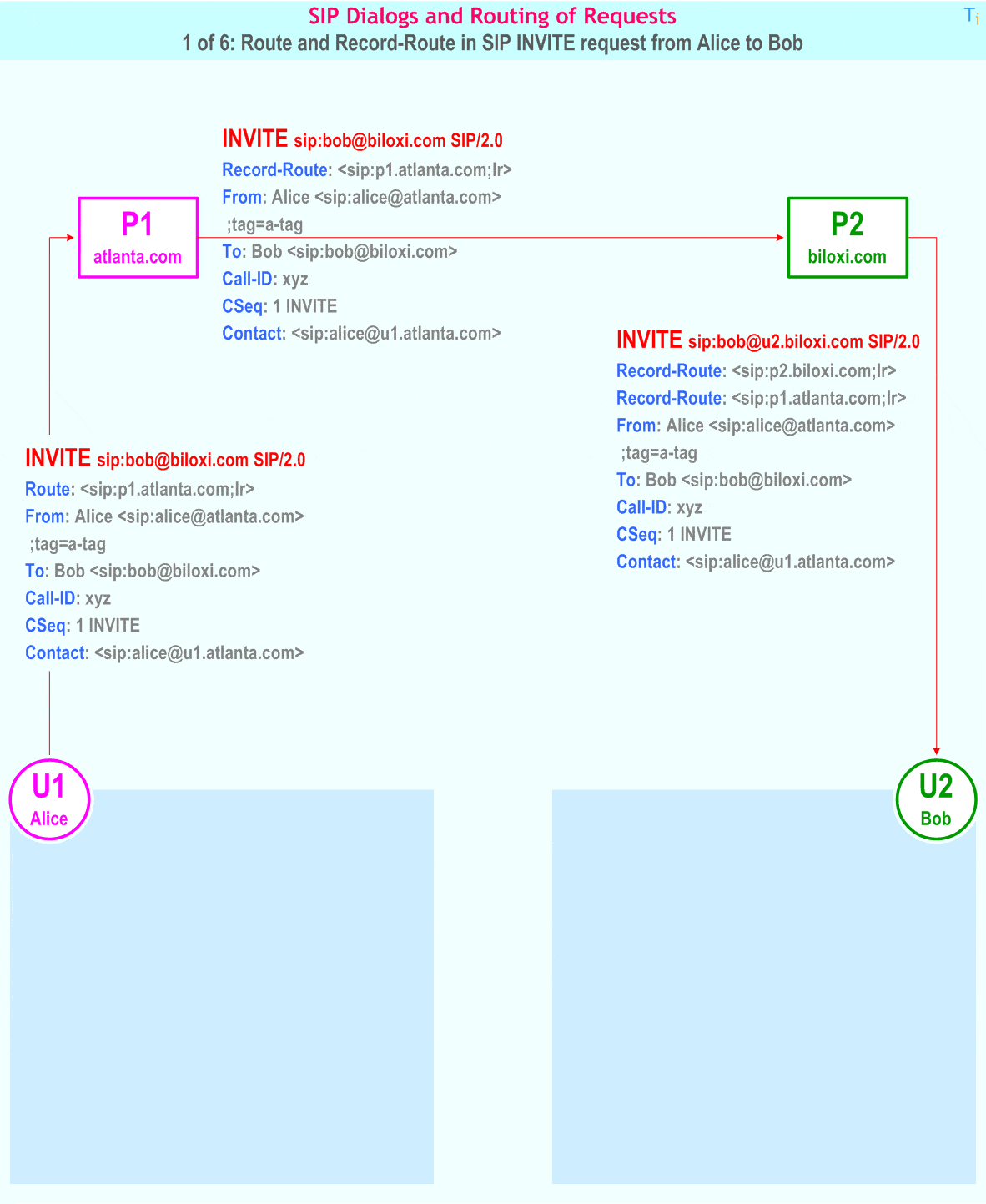
A Dialog is a peer-to-peer relationship between two user agents. It represents a context that facilitates the sequencing of messages between the user agents and proper routing of requests between both of them. The following sequence of figures illustrates the creation of a dialog, the processing of requests during this dialog, and the termination of the dialog. This example shows two proxies that request to be maintained in the signalling path by inserting Record-Route header fields. Only the header fields relevant to the dialog and the routing of requests are shown in the SIP messages.
Note that 100 Trying provisional responses are not shown.
U1:
- generates the INVITE request;
- in this example, U1 is configured with a Route set containing a single URI, that of the outbound proxy (<sip:p1.atlanta.com;lr>); it applies DNS procedures to this URI for determining where to send the request.
- inspects the Request-URI (sip:bob@biloxi.com) and does not change it because it is not responsible for the resource indicated in this URI;
- sees that it is the first value in the Route header field so it removes that value;
- adds a Record-Route header field value;
- forwards the request to the resource indicated in the Request-URI (the route set is now empty) by applying DNS procedures.
- inspects the Request-URI: it is responsible for "biloxi.com" so it runs a location service and rewrites the Request-URI (sip:bob@u2.biloxi.com);
- adds a Record-Route header field value;
- forwards the request to the resource indicated in the Request-URI (the route set is empty) by applying DNS procedures.